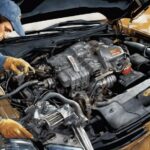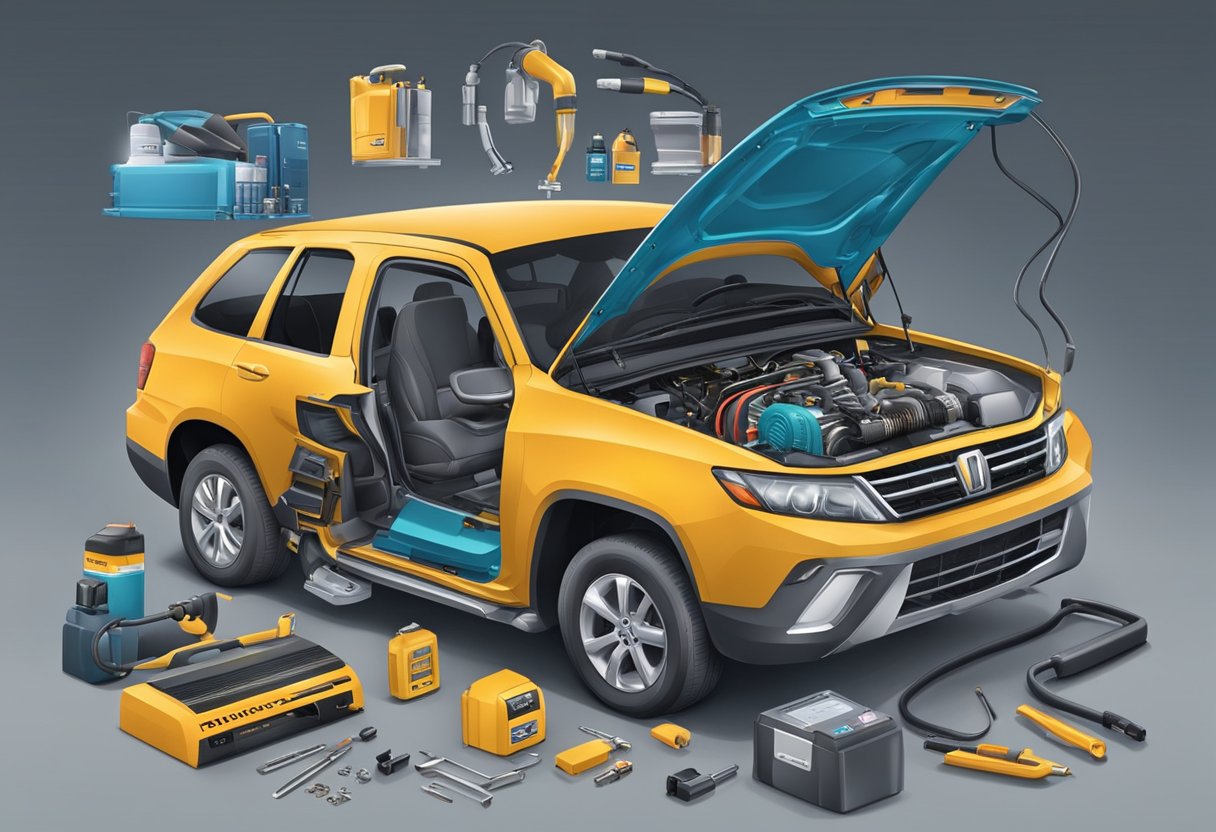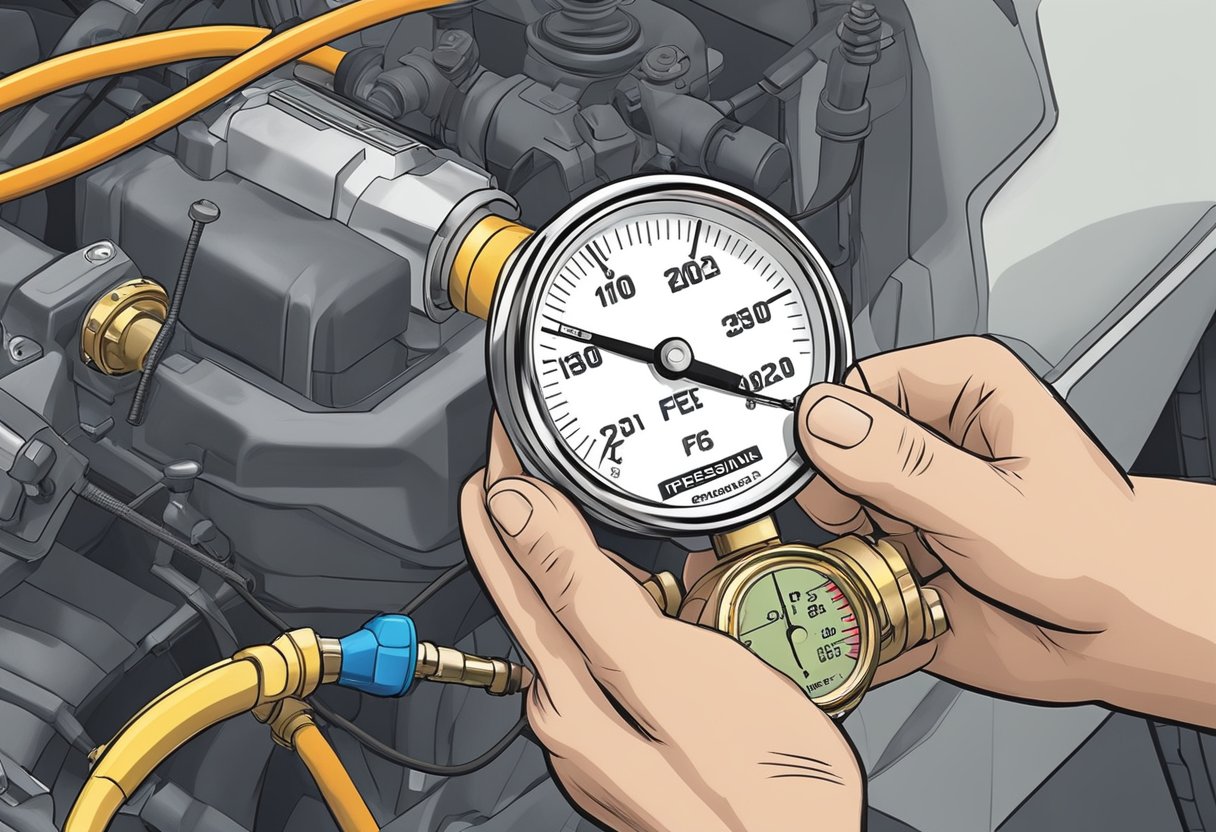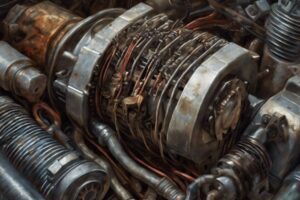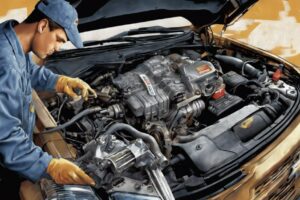Diagnosing a faulty fuel pump can be a frustrating experience for any car owner.
A faulty fuel pump can cause a car to stall, misfire, or not start at all, making it crucial to identify and fix the problem as soon as possible.
Fortunately, diagnosing a faulty fuel pump is not as difficult as it may seem, and with a little bit of knowledge and the right tools, you can easily determine whether your fuel pump is the culprit.
The first step in diagnosing a faulty fuel pump is to understand the symptoms of a failing fuel pump.
Some of the most common symptoms include difficulty starting the engine, stalling or hesitation while driving, poor fuel efficiency, and a loud whining noise coming from the fuel tank.
These symptoms can be caused by a variety of issues, but a faulty fuel pump is often the culprit.
By understanding these symptoms, you can quickly determine whether your fuel pump is the cause of your car troubles.
Understanding Fuel Pump Functionality
A fuel pump is a crucial component of your vehicle’s fuel system.
It is responsible for pumping fuel from the gas tank to the engine.
Understanding how a fuel pump works can help you diagnose problems with your vehicle’s fuel system.
Fuel pumps come in two types: mechanical and electric.
Mechanical fuel pumps are typically found in older vehicles, while electric fuel pumps are more common in modern cars.
In a mechanical fuel pump, a lever attached to a camshaft moves a diaphragm to pump fuel.
The diaphragm pulls fuel from the gas tank and pushes it into the engine through a fuel line.
Electric fuel pumps, on the other hand, use an electric motor to pump fuel.
The motor is powered by the car’s battery and is controlled by the car’s engine computer.
The fuel pump is usually located inside the gas tank and uses a fuel filter to prevent debris from entering the engine.
Both types of fuel pumps can experience problems.
A clogged fuel filter, faulty fuel pressure regulator, or damaged fuel lines can cause a fuel pump to malfunction.
Symptoms of a faulty fuel pump include difficulty starting the engine, reduced fuel efficiency, and engine misfires.
In summary, understanding how your vehicle’s fuel pump works can help you diagnose problems with your fuel system.
Whether you have a mechanical or electric fuel pump, keep an eye out for symptoms of a faulty pump and address any issues promptly to ensure your vehicle runs smoothly.
Symptoms of a Faulty Fuel Pump
If you suspect that your vehicle’s fuel pump is faulty, it’s important to diagnose the issue as soon as possible.
Here are some common symptoms of a faulty fuel pump:
Difficulty Starting the Vehicle
If your vehicle is having trouble starting, it could be a sign of a faulty fuel pump.
A fuel pump that’s not working properly may not be able to deliver enough fuel to the engine, which can prevent the vehicle from starting.
Engine Sputtering at High Speeds
If your engine is sputtering or hesitating at high speeds, it could be a sign of a faulty fuel pump.
A fuel pump that’s not working properly may not be able to deliver enough fuel to the engine, which can cause it to sputter or hesitate.
Loss of Power Under Stress
If your vehicle is losing power under stress, such as when accelerating or climbing a hill, it could be a sign of a faulty fuel pump.
A fuel pump that’s not working properly may not be able to deliver enough fuel to the engine, which can cause a loss of power.
Surging
If your vehicle is surging or bucking while driving, it could be a sign of a faulty fuel pump.
A fuel pump that’s not working properly may not be able to deliver a consistent flow of fuel to the engine, which can cause surging or bucking.
Decreased Fuel Efficiency
If you’ve noticed that your vehicle’s fuel efficiency has decreased, it could be a sign of a faulty fuel pump.
A fuel pump that’s not working properly may not be able to deliver enough fuel to the engine, which can cause decreased fuel efficiency.
If you’re experiencing any of these symptoms, it’s important to have your vehicle inspected by a qualified mechanic to determine if the fuel pump is the issue.
Diagnostic Tools and Techniques
To diagnose a faulty fuel pump, you will need some specialized tools and techniques.
In this section, we will discuss the most common diagnostic tools and techniques that you can use to diagnose a faulty fuel pump.
Fuel Pressure Test
A fuel pressure test is one of the most common diagnostic tests used to diagnose a faulty fuel pump.
This test measures the fuel pressure in the fuel system. To perform this test, you will need a fuel pressure gauge.
To perform a fuel pressure test, you will need to connect the fuel pressure gauge to the fuel rail or the fuel line.
Once you have connected the gauge, you will need to turn on the ignition and let the fuel pump run for a few seconds.
The fuel pressure gauge will then display the fuel pressure.
If the fuel pressure is lower than the manufacturer’s specifications, then there is a problem with the fuel pump.
If the fuel pressure is within the manufacturer’s specifications, then the fuel pump is working correctly.
Electrical Circuit Check
Another common diagnostic test used to diagnose a faulty fuel pump is an electrical circuit check.
This test checks the electrical circuit that powers the fuel pump.
To perform this test, you will need a digital multimeter.
To perform an electrical circuit check, you will need to locate the fuel pump relay and the fuel pump fuse.
Once you have located these components, you will need to use the multimeter to check the voltage at the fuel pump relay and the fuel pump fuse.
If there is no voltage at the fuel pump relay or the fuel pump fuse, then there is a problem with the electrical circuit.
If there is voltage at the fuel pump relay and the fuel pump fuse, then the electrical circuit is working correctly.
Sound Inspection
A sound inspection is a simple diagnostic test that can help you diagnose a faulty fuel pump.
This test involves listening to the fuel pump while it is running.
To perform a sound inspection, you will need to turn on the ignition and listen for the fuel pump.
The fuel pump should make a buzzing or humming sound. If you do not hear any sound, then there is a problem with the fuel pump.
In conclusion, these diagnostic tools and techniques can help you diagnose a faulty fuel pump.
By using these tools and techniques, you can quickly and accurately diagnose a faulty fuel pump, which can save you time and money in the long run.
Fuel Pump Replacement Process
Replacing a faulty fuel pump can be a challenging task, but with the right tools and knowledge, it can be done easily.
Here is a step-by-step guide to help you replace your faulty fuel pump.
Preparation and Safety
Before you begin the fuel pump replacement process, it is important to take necessary safety precautions.
Make sure to turn off the engine and disconnect the battery to avoid electrical shocks.
Wear gloves and safety goggles to protect your hands and eyes from fuel spills.
Next, gather all the necessary tools and equipment needed for the replacement process.
These include a socket wrench set, a fuel pressure gauge, a replacement fuel pump, and a fuel filter.
Make sure to consult your vehicle’s manual to ensure you have the correct type of fuel pump for your car.
Removal of the Faulty Fuel Pump
To remove the faulty fuel pump, first, locate the fuel pump assembly.
This is usually located in the fuel tank, which may require you to remove the tank to access the pump assembly.
Once you have access to the pump assembly, use a fuel pressure gauge to relieve the fuel pressure in the system.
Next, disconnect the fuel lines and electrical connections from the fuel pump.
Use a socket wrench to loosen and remove the bolts holding the fuel pump assembly in place.
Once you have removed the assembly, carefully remove the faulty fuel pump.
Installation of the New Fuel Pump
Before installing the new fuel pump, make sure to install a new fuel filter to prevent contamination of the new pump.
Carefully install the new fuel pump into the assembly and secure it with the bolts.
Next, reconnect the fuel lines and electrical connections to the new fuel pump and reattach the fuel tank if required.
Finally, turn on the engine and check for any leaks or abnormalities in the fuel system.
In conclusion, replacing a faulty fuel pump requires proper safety precautions, the right tools, and knowledge of the fuel pump assembly.
By following these steps, you can replace your faulty fuel pump and ensure your vehicle runs smoothly.
Troubleshooting Common Issues
When diagnosing a faulty fuel pump, there are a few common issues that you should check for.
These issues include electrical connector problems, fuel line complications, and a clogged fuel filter.
Electrical Connector Problems
One of the most common issues with fuel pumps is related to the electrical connectors.
If the connectors are not properly connected or are damaged, the fuel pump may not receive the necessary power to operate.
To troubleshoot this issue, you should check the electrical connectors for any signs of damage or corrosion.
If you notice any damage, you should replace the connectors.
Fuel Line Complications
Another common issue with fuel pumps is related to the fuel lines.
If the fuel lines are damaged or clogged, the fuel pump may not be able to pump fuel properly.
To troubleshoot this issue, you should check the fuel lines for any signs of damage or clogging.
If you notice any damage or clogging, you should replace the fuel lines.
Clogged Fuel Filter
A clogged fuel filter can also cause issues with the fuel pump.
If the fuel filter is clogged, the fuel pump may not be able to pump fuel properly.
To troubleshoot this issue, you should check the fuel filter for any signs of clogging.
If you notice any clogging, you should replace the fuel filter.
By checking for these common issues, you can diagnose a faulty fuel pump and take the necessary steps to fix the problem.
As an Amazon Associate we earn from qualifying purchases.



